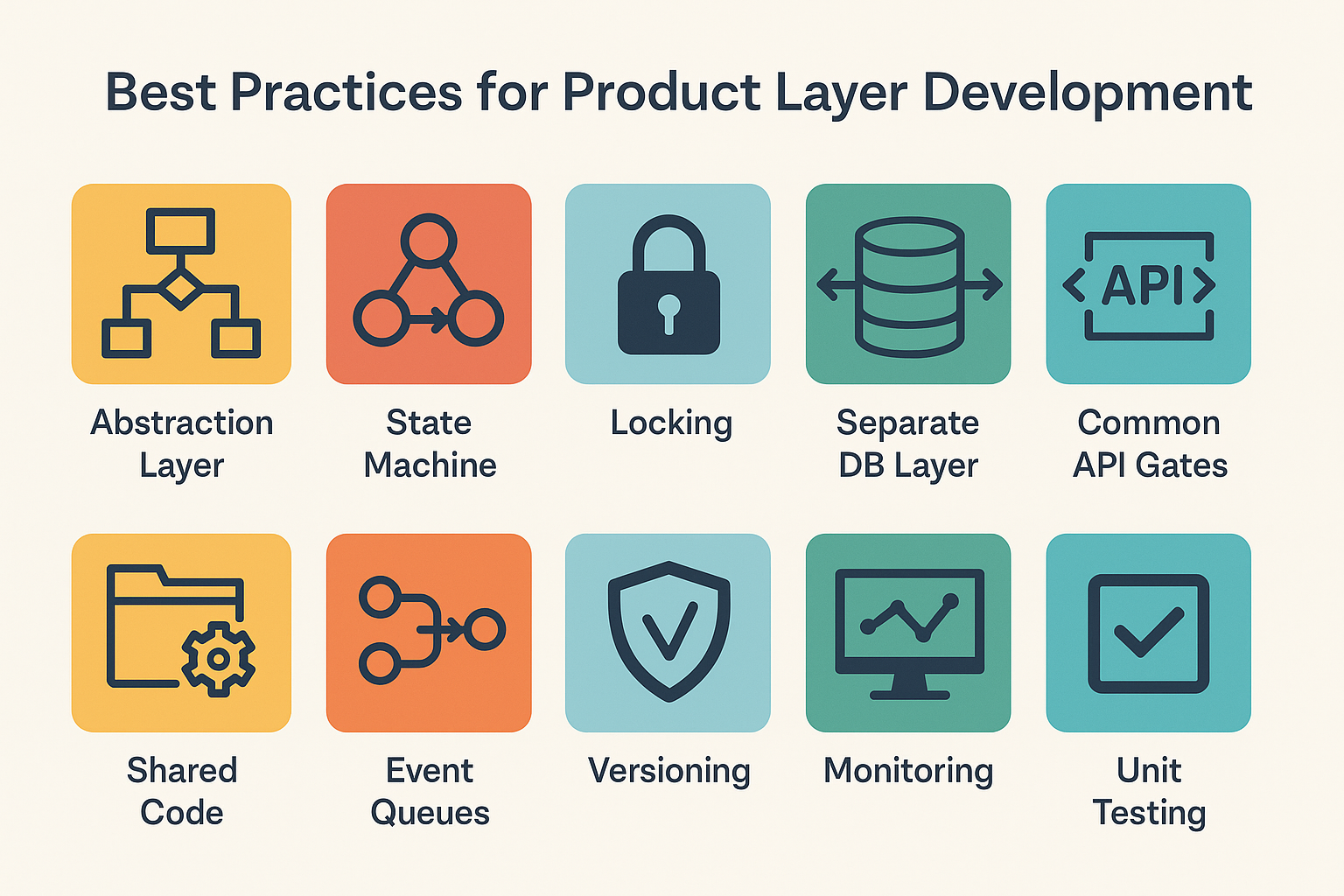श्री Yogesh Ashok Powar
Personal Blogs
Best Practices for Product Layer Development
A Scalable and Maintainable Approach
Tags: TechFollowing are the best practices that I learned by doing. Every point added here was offered as solution to some scalability & maintainable problem in the past for the tech product/s we were serving.
Core Design & Stability
-
Build core logic on the abstraction layer rather than directly on third-party API responses. This ensures modularity and easier change management.
-
Implement state-machine (SM) at the core logic. A system could have multiple SMs. This ensures deterministic control over lifecycle flows.
-
Think of locking where there is race or critical-region. This prevents concurrency bugs and maintains data integrity.
-
There should be a separate DB layer with a common entry & exit gate for future extensions. This isolates persistence logic and eases changes like DB migration or sharding.
-
Avoid cron jobs, scripts, or parallel systems consuming the same database or repeating business logic. Direct DB access should be avoided. This eliminates risk of logic duplication or unsynchronized operations.
-
Versioning must be implemented for APIs, events and internal modules. This enables backward compatibility and smoother rollouts of breaking changes.
Maintainability & Extensibility
-
There must be common gates (entry/exit) for API handlers. This centralizes authentication, validation, and logging.
-
Common utility/modules/libraries should be reused via a shared codebase. Avoid re-writing. Promotes Don’t Repeat Yourself (DRY) principles and consistent behavior.
-
Maintain event queues for other services to collect or consume. This decouples services and supports async communication.
-
Unit testing should be mandatory for all core modules and components. This builds confidence during refactors and CI/CD pipelines.
-
Monitoring should be integrated at the service level for metrics, errors, and performance. This enables observability, alerting, and system health tracking.
Operational Enhancements
-
Logging levels should be centrally managed, with options to enable logs for specific modules or sub-modules. This helps in targeted debugging without bloating logs.
-
Documentation is a must; it extends the life of the code. This Aids onboarding and transitions; especially useful post-MVP phase.
While time constraints in v1 or first drop may lead us to skip some, we must eventually address them. These principles are critical for building a stable and scalable product.
Happy Coding.
Tags: Tech
Updated on: 2025-05-24
